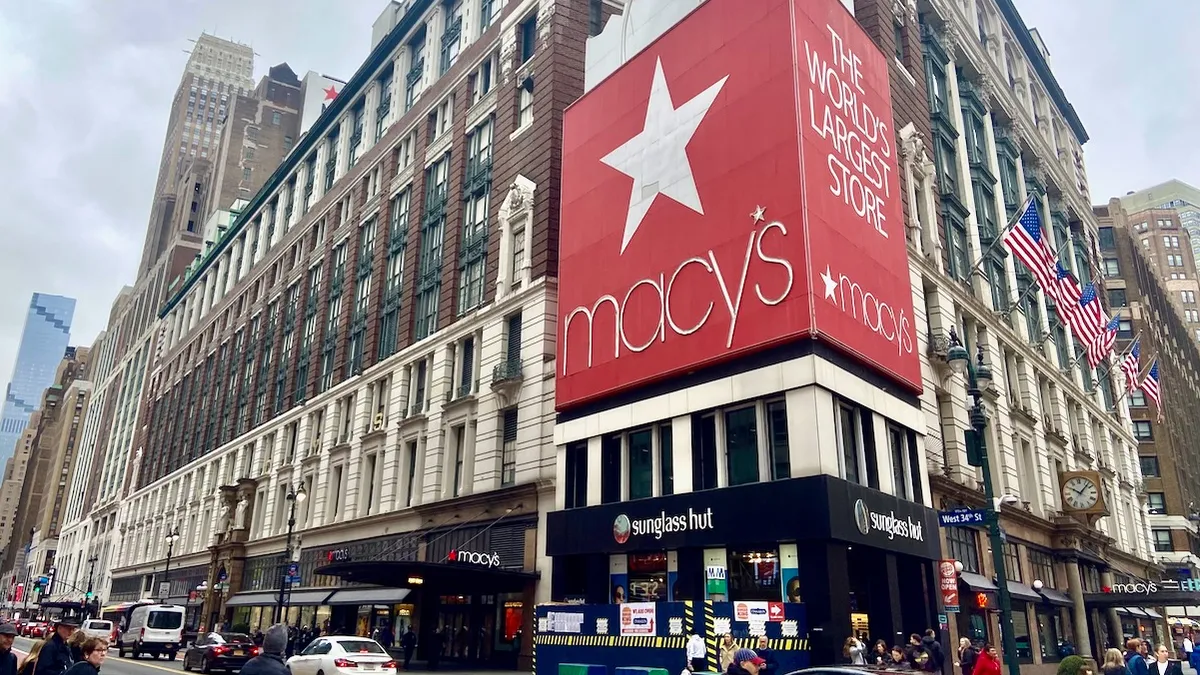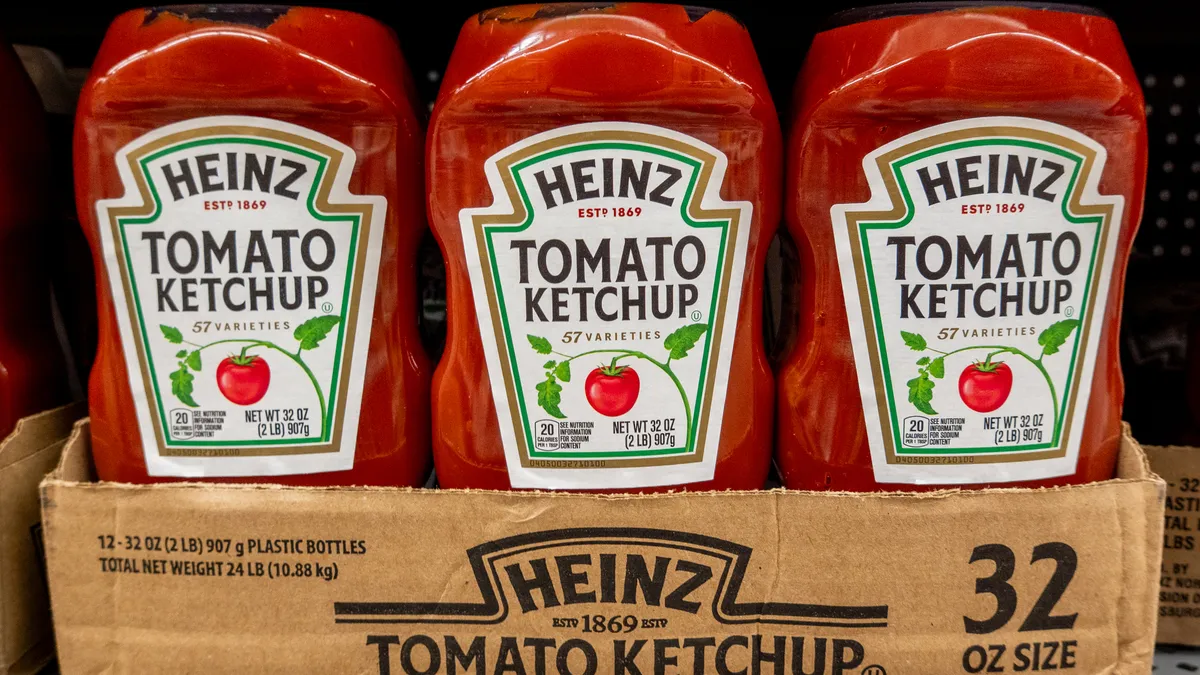Supply chains are constantly changing as new rules, technologies, resources and market trends transform operations. Here's a skim of the week's indexes, technology announcements, expansions and M&As from around the web.
In Case You Missed It
- Crisis averted: The ILA president called off a port shutdown, promising to meet with Congress.
- What do the CEOs of Apple and Lego have in common? They both started in supply chain.
- Gap will convert its warehouses into hybrid, online and store fulfillment centers by 2018.
Market Snapshot
The U.S. economy is on the rise and supply chains are feeling the side effects.
The Institute for Supply Management's February 2017 Manufacturing ISM Report on Business shows 17 of the 18 surveyed industries reported growth last month, as increased demand has forced greater production and investments across the economy.
The PMI saw a 1.7% increase last month from January and an 8.2% increase from the previous year, showing a continuing trend of increased production in the manufacturing sector. In fact, February marks the sixth consecutive month of growth for the sector and the 93rd month of growth for the general economy.
Yet, higher demand requires manufacturers to scale up their production — which, while promising, may strain supply chains.
The index reveals last month's demand was so overwhelming, supplier deliveries slowed, inventories grew and order backlogs increased significantly. In fact, backlogs in February reached the highest point since March 2014, with 26% of respondents noting an increase in backlogs.
In many industries, a single material in short supply, or a general increase in demands to suppliers, may cause a ripple effect of backlogs and slower deliveries as companies struggle to prioritize buyers. Such strain on suppliers can also be measured by growth in general lead times, which increased for capital expenditure investments (+1 to 141 days), production materials (+4 to 61 days) and maintenance, repair and operating supplies (+2 to 33 days) alike.
Growth in the manufacturing industry is good news for all, as greater volumes transported also lead to growth in freight transportation, although various inefficiencies can stifle that market. Information yields efficiency, however, and this week saw the birth of two new indices to better understand the freight transportation market.
On Monday, Freightos launched its weekly Freightos International Freight Index to help shippers benchmark prices for ocean freight shipping on three trade lanes. While similar to several existing indices — like the Shanghai Containerized Freight Index — they are typically hampered by a lack of breadth or availability. Freightos' free index seeks to eventually expand to benchmark all trade lanes.
Similarly, logistics research and analytics consultancy Logistics TI and Mike King & Associates launched the monthly APAC Forwarding Index, which will evaluate changes forwarding industry in the Asia Pacific region.
Technically Speaking
What would a race be without a little bit of drama?
The dozen or so companies rushing to bring a self-driving car to market were bound to enter a collision course at some point, and of course, two of the expected market leaders were the first to clash. Alphabet self-driving car subsidiary Waymo filed a lawsuit against ride-sharing startup Uber and its self-driving technology partner, Otto. Waymo claims the technology being used by its competitors misappropriated key information related to Light Detection and Ranging technology and circuit boards, American Shipper reports.
While the giants are battling however, another startup entered the market to bring self-driving technology to trucks. The startup, Embark, would directly compete with Otto in the push for automated trucking, except the company is developing retrofit systems, which a co-founder claims would cost less than $50,000, Overdrive reports.
Radars and cameras are not the only smart devices that can be mounted on trucks, at least according to Dell. The company launched a new line of mini-computers to install on trucks in order to transmit Internet of Things (IoT) information from the vehicles, although they could also be used in elevators, oil pumps and other remote locations.
Dell is not the first to think of this concept, however. BlackBerry, which recently turned to sensors as a business model, has its own mounted-device for tracking chassis, trucks and containers: BlackBerry Radar. Such devices allow logistics providers to provide visibility to various clients without committing to a single system, although of course proprietary systems exist.
The drive for visibility, and because increased data runs so deep, it has even reached vehicles' tires. Michelin recently announced it would add RFID tags to all truck tires in order to help companies save on fleet maintenance. The tags can provide information about the tires' life and service history with just an RFID reader, and could therefore help avoid maintenance-related accidents.
In other news, DHL recently launched a new delivery bicycle similar to UPS in order to help improve last-mile logistics in dense urban zones, and IAG Cargo announced it would adopt a new WMS and customer portal to help digitize the air cargo company's operations.
Breaking Ground
The nationwide logistics boom may be reaching an end, at least, according to a recent report in The Wall Street Journal, citing a 19.3% decrease in tenant occupancy of big-box warehouses. And yet, builders keep building: last year marked the highest rate of warehouse construction in at least five years, per the same report.
The growth in warehouse construction extends back to at least 2011, but as the market matures and demands are made clear, where the warehouses are being built says just as much as the fact they are being built in the first place.
A recent report from industrial real estate firm JLL shows the logistics boom is expanding geographically. Whereas previously many new warehouses were concentrated in traditional logistics markets including the Lehigh Valley in Pennsylvania, the Dallas-Fort Worth area in Texas and Southern California's Inland Empire, the Midwest is seeing a boom in construction as well.
In addition, many of those warehouses currently constructed are being pre-leased or commissioned by companies seeking new distribution centers.
A few Midwestern examples from various industries: Whole Foods will build a 100,000 square-foot facility in Munster, IN to help service the Chicago market; maintenance, repair and operating product supplier W.W. Grainger will invest up to $273 million on a new distribution center in Louisville, KY; and LG Electronics is expanding its washing machine manufacturing operations to Tennessee to move its production closer to demand.
Of course, traditional markets are not falling behind, either. Just last week, UPS announced it would build a $275 million, 840,000 square-foot processing facility in Salt Lake City, UT, and Sports Warehouse chose Atlanta, GA as its new hub for East Coast operations.
Mergers & Analysis
Perhaps its the new year's optimism, but as companies wrap up their annual reports and look to 2017, some are already projecting further acquisitions.
At JOC Events' TPM 2017, CMA CGM's new chief Rodolphe Saadé said the shipping industry's consolidation was not yet over, and as the integration of American President Lines concludes, the third-largest line is eyeing further takeover targets.
.@cmacgm's Saade: "We do believe that consolidation will be the name of the game in our industry and more will come." #TPM2017
— Reynolds Hutchins (@Hutchins_JOC) February 28, 2017
The biggest winners of such industry-wide consolidation may not be the shipping lines themselves however, but the startups offering various solutions to the age-old freight transportation industry.
Rodolfe Saade of @cmacgm said the line has set up a venture capital firm to invest in startups. Wants to invest 2 mill euros/yr #TPM2017
— Eric Johnson (@AmShipEric) February 28, 2017
It is not just the shipping industry with its eyes on digitization and innovation. After releasing its 2016 Annual Report, global freight forwarder Kuehne + Nagel announced it would go on an acquisition hunt in 2017 to "accelerate" its profits. While the company did not specify what it was looking for, the company has set IT competence as a priority to modernize its freight forwarding business.
In fact, even some logistics startups are noticing the market potential of a pure-technology play and moving away from the transportation business altogether.
At least, that appears to be the case with Cargo Chief, which recently sold its logistics and transportation services division to Rutherford, NJ-based Genpro. In turn, the company can focus on developing its proprietary technology platform, which matches loads with shipping capacity, according to Logistics Management.
In other news, American Shipper reports Direct ChassisLink acquired NYK Line's 11,000 chassis fleet, bringing the former's total fleet to 133,000 chassis.






















